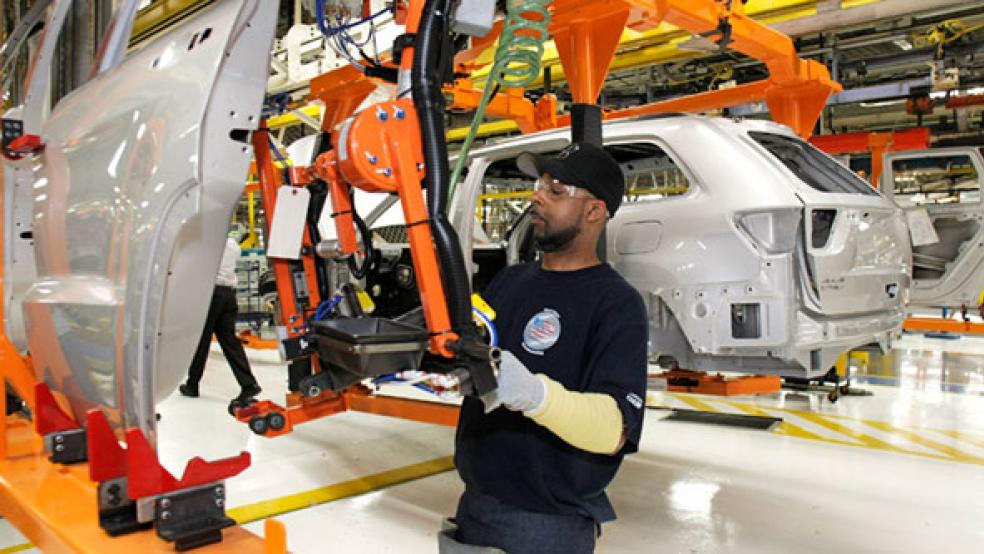Our long, cold economic winter may finally be ending. The economy added 192,000 jobs in February, and unemployment dropped from 9 percent to 8.9 percent, according to the U.S. Bureau of Labor Statistics. With oil prices spiking and inflation threatening, there’s still plenty to worry about. But economists say they are seeing real signs that the job market will continue to warm up over the next six months. “We think the labor market will have strong gains in the second half of 2011,” says Gus Faucher, director of macroeconomics at Moody’s Analytics. Faucher is looking for job gains of 250,000 a month going forward.
Here are six reasons we can finally feel hopeful about the job market.
1. The sun will come out — really. A series of nasty winter storms partly explains why employers added a measly 36,000 jobs in January, a steep drop from previous months. Frosty weather can discourage hiring, and the transportation, warehousing and construction sectors all shed lots of jobs. But the weather in February was a little more seasonable, and hiring rebounded in all three sectors, with construction employment growing by 33,000 jobs and transportation and warehousing adding 22,000. More important, of course, economists say demand for additional workers will continue to increase for the rest of the year because the economy as a whole is growing. Earlier this week, the Federal Reserve confirmed in its survey of central banks, known as the Beige Book, that economic activity had expanded in nearly every region of the country.
2. Manufacturing continues to motor along. Durable-goods makers accounted for much of the 33,000 jobs added in manufacturing and signs point to good growth for the rest of the year. The Institute for Supply Management’s February survey showed big gains in both employment and production, with strong demand in developing economies continuing to drive exports. “Almost all of the data we’re seeing have been positive,” says Patrick O’Keefe, director of economic research at J.H. Cohn LLP. He says he expects employers to step up hiring in health care, education, professional services and retailing in coming months.
3. Companies large and small are getting back into the game. Small businesses are typically the engines of new job growth, and mom and pop operations are starting to hire again. But when big employers such as Lowes or Ford announce plans to hire thousands of workers, as they did earlier this year, it can have a broad, reassuring effect. Corporate profits have been strong, thanks to cost cutting as well as increased consumer spending. As confidence in the economy builds, economists say employers will step up hiring. For the week ending Feb. 26, the number of people requesting unemployment benefits dropped to a three-year low, according to the Labor Department, a strong sign that faith in the economy is translating into job postings.
4. Consumers are feeling the thaw. “Consumers are coming back – they’re spending,” Ben Bernanke told members of Congress earlier in the week. While it’s the Fed chairman’s job to be optimistic, there is growing evidence that he’s right. Consumer confidence reached a three-year high in February, according to the Conference Board, indicating that Americans are feeling better about their own prospects. Retail sales jumped in February as stores, including Saks, Macy’s and Nordstrom’s, reported stronger-than-expected results, according to the Thomson Reuters Retail Composite Index. As consumers’ mood continues to improve, they’ll start making the big purchases they delayed during more uncertain times, says Moody’s Faucher. The percentage of people who say they plan to buy a car in the next six months, is 13 percent up from five percent earlier in the year, he says, the highest level in years.
5. There’s strength in the numbers. The unemployment rate may tick up in coming months, but the underlying news is still good. As hope begins to creep back into the job market, discouraged workers who had given up on job hunting will come back into the job market. The BLS doesn’t count people who aren’t actively looking for work in the past four weeks as unemployed, so when discouraged workers dust off their resumes, the unemployment rate can edge up. We’re also likely to see workers who settled for part-time work landing full-time jobs, although that number held steady at 2.7 million workers in February. But while the overall unemployment number might not budge, these developments are good news for households and likely to encourage consumer spending.
6. The kids are all right. Even though unemployment remains high among younger workers – the rate for teenagers still topped 23 percent in February – the outlook for college-educated entry-level workers is improving significantly. The prospects for the class of 2011 are much better than graduates in recent years, according to the National Association of Colleges and Employers, which tracks recruiting and hiring. Economists say the picture is especially strong for recent grads, who tend to be highly skilled, mobile and cheaper than older, more experienced workers.Of course, none of these economic green shoots matter if you’re one of the 13.7 million Americans who remains unemployed. Despite signs of improvement, the overall rate of 8.9 percent remains high, and will continue to hit hardest those with the fewest skills and least education. Economists still debate whether the chief obstacle to more hiring is weak demand or a bigger structural problem -- that the skill sets of the unemployed no longer match the needs of employers. We aren’t likely to have the answer for months, or even years. But for now, at least, it seems like spring is finally here.
Related Links:
Unemployment Rate Falls In February, U.S. Adds 192K Jobs (The Huffington Post)
National Association of Colleges and Employers Hiring Index Shows Increase In Jobs For College Grads. (The Huffington Post)



